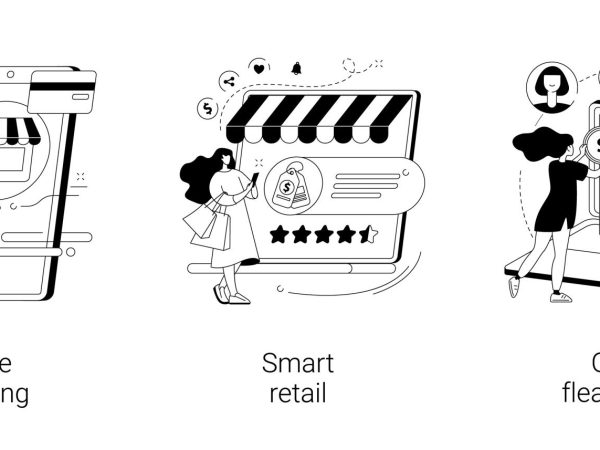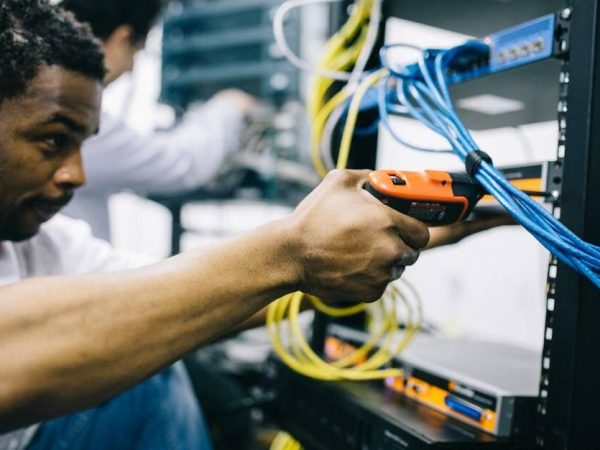Ready to take your organization to new heights? Equip your employees with the tools, knowledge, and confidence they need to succeed as leaders. Our guide below will share tips on how to prepare employees for leadership roles.
Keep reading to learn more about empowering employees in your business.
Mentorship Programs
With a mentorship program, you will allow emerging leaders to benefit from the guidance of those with more experience. You can pair employees with experienced mentors.
These mentors have been with the company for years. This will help those future leaders develop skills. They can observe their mentor in action.
Mentors serve as coaches and role models. They help guide mentees in developing essential leadership skills and competencies. Mentors also provide career guidance and support as mentees navigate their professional paths.
Mentorship programs also promote holistic personal and professional growth for mentees. Mentors help mentees identify their strengths, weaknesses, and areas for development. Mentees gain self-awareness, resilience, and adaptability, which are essential qualities for effective leadership.
Workshops and Seminars
Workshops and seminars provide employees with training specifically for traits leaders must have. For example, decision-making, communication, strategic thinking, etc. These events usually involve interactive exercises. Activities like role-playing exercises and learning simulations help contribute to strengthening leadership skills.
Leadership training in New Zealand is a perfect example of the right program. It helps equip employees at every level in an organization to face business challenges. Workshops and seminars also provide opportunities for peer learning and networking.
Those attending have the opportunity to connect with other aspiring leaders. You can foster a culture of continuous learning and improvement within your organization. By investing in these types of events, you will empower your employees.
They will develop the skills, confidence, and knowledge they need. This will help them excel as future leaders within your organization.
Continuous Learning Opportunities
Encouraging a culture of continuous learning enables employees to stay on top of emerging trends. It also helps them adopt best practices and keep up with industry developments. This is relevant to leadership roles.
Providing access to online courses, webinars, and industry conferences empowers employees. They can expand their knowledge and skills at their own pace.
Continuous learning also encourages innovation by stimulating creativity, critical thinking, and problem-solving skills. Continuous learning also encourages innovation by stimulating creativity, critical thinking, and problem-solving skills.
It fosters a culture of innovation and experimentation within the organization. It happens by exposing employees to diverse perspectives, ideas, and experiences.
This empowers employees to think outside the box and drive positive change. It also encourages
them to act as leaders.
Continuous learning opportunities facilitate networking and collaboration among employees. This helps enable future leaders to connect with experts in the industry and mentors.
Continuous learning opportunities promote personal growth and development. They do this by encouraging employees to pursue their interests, passions, and aspirations.
Cross-Functional Training
Exposing employees to diverse experiences and perspectives through cross-functional training can broaden their understanding of the organization. Rotational assignments and job shadowing allow employees to develop a holistic view of the business. They also hone their leadership capabilities.
This training helps employees understand how different parts of the organization function. It also helps them develop a deeper understanding of the organization.
It also helps them understand how the parts interact with each other. This firsthand experience helps employees gain insights into how the organization connects. They also realize the importance of collaboration and teamwork.
Employees can acquire new skills and competencies that are relevant to leadership roles. By working in different functional areas, employees have the opportunity to develop a diverse skill set. Cross-functional training also provides employees with opportunities to take on leadership roles
Executive Coaching
Executive coaching offers personalized guidance and support to high-potential employees. It helps them in their leadership journey. Working with experienced coaches, helps individuals identify their strengths and areas for development. With this knowledge, they can set actionable goals. They can also receive feedback to enhance their leadership effectiveness.
Executive coaching helps employees identify and address behavioral patterns and habits. These may be hindering their effectiveness as leaders.
Coaches provide feedback, insight, and support to help employees recognize and modify behaviors that may be impeding their leadership performance. This enables them to adopt more productive and adaptive ways of leading.
This coaching also helps employees build confidence and self-assurance in their leadership abilities. Coaches provide encouragement and affirmation.
They also support employees to help them overcome self-doubt and imposter syndrome. They empower them to step into leadership roles with confidence and conviction.
Executive coaching focuses on improving employees’ overall performance as leaders. Coaches work with employees to identify performance gaps.
They also set actionable goals and develop strategies for achieving desired outcomes. This can be by increasing team productivity or improving employee engagement.
Feedback and Performance Reviews
Regular feedback and performance review phrases provide valuable insights into employees’ progress. It also gives insight into where things can be improved.
Feedback and performance reviews help employees develop self-awareness. They provide insights into their strengths, weaknesses, and areas for improvement.
Constructive feedback from managers, peers, and direct reports help employees understand their leadership style better. Feedback and performance reviews also clarify expectations for employees in leadership roles. They do this by defining key performance indicators, goals, and objectives.
By aligning performance expectations with organizational priorities, employees understand what is expected of them. This allows employees to focus their efforts on areas that drive business results. It also enhances leadership effectiveness.
Leadership Simulations and Role-Playing Exercises
Engaging employees in leadership simulations and role-playing exercises allows them to practice leadership skills. This happens in a risk-free environment.
These interactive activities provide hands-on experience. Future leaders will develop decision-making, problem-solving, and team management.
Ready to Prepare Your Employees for Leadership Roles?
You learned the top ways to prepare your employees for leadership roles. Now, it’s time to get your employees ready to level up.
Embracing our tips above can help you build confident leaders. Remember, when you invest in
management development programs, you will strengthen your company’s leadership.
If you found this blog post helpful, make sure you keep browsing this section for our latest guides.













